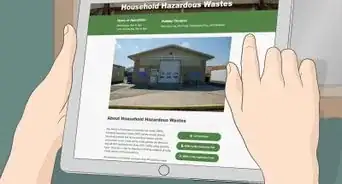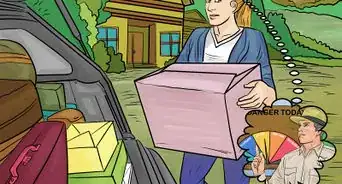This article was co-authored by wikiHow Staff. Our trained team of editors and researchers validate articles for accuracy and comprehensiveness. wikiHow's Content Management Team carefully monitors the work from our editorial staff to ensure that each article is backed by trusted research and meets our high quality standards.
wikiHow marks an article as reader-approved once it receives enough positive feedback. In this case, 93% of readers who voted found the article helpful, earning it our reader-approved status.
This article has been viewed 230,520 times.
Learn more...
All offices, schools, and buildings are required to have fire drills, which help prepare you for a real emergency. Behaving correctly in a fire drill will train you to respond calmly and safely in the unlikely event of a real fire.
Steps
Responding to the Fire Alarm
-
1Stay calm. Do not panic when you hear the fire alarm. Also, it's important to stay quiet so you can hear any instructions.
- In fact, it's important to be quiet and calm the whole time the fire drill is happening, not just when it starts.
-
2Treat the alert as if it were a real fire. Though you may think the fire alarm is just for practice, you should always treat it as there actually is a fire. You have to practice the drill seriously to learn the proper procedure so that when a fire does happen, you won't panic.[1]
- In fact, even if a drill is scheduled, something could have happened to cause a real emergency. Always treat the drill as if it were the real thing.
Advertisement -
3Stop what you're doing. When you hear the alarm, you must stop anything you are doing at the time. Don't take time to finish a sentence on your paper or send an email. Don't take time to gather your things. Respond to the alarm immediately.[2]
-
4Start moving out of the building. Consider where the nearest exit is. Leave the room you are in going in that direction.[3]
- Try to be as orderly as possible as you leave the room. Line up to exit the room. Don't start running.
- If possible, know the route to the nearest fire exit before a fire drill happens. It's always a good idea to check for your route when you're in a new building, especially one you will spend a good deal of time in. For instance, hotels are required to have the fire exit on the back of your hotel door.
- Under no circumstances should you ever use an elevator in an emergency evacuation.
-
5
-
6Leave the lights on. Do not turn the lights off as you exit the room. Leaving the lights on will help firefighters see better.
Making Your Way Through the Building
-
1Move to the nearest exit. Go along the prescribed route for evacuating the building. If you don't know where the nearest exit is, look for "Exit" signs as you move down the hallways. These signs will usually be in red (or green in the UK) and sometimes will be lighted.[6]
-
2Check doors for heat. When you're in a real fire, you must check doors for heat as you come up to them. Look for smoke coming under the door, and place your hand near the door to see if it is radiating heat. If you see neither of these signs, try lightly touching the door handle to see if it is hot. In a real fire, if you find any of these signs, you must go another route.[7]
-
3Take the stairs. You should not use elevators during a fire drill. During a real fire, elevators are used by the firefighters to help fight the fire. Plus, elevators can be dangerous during a fire.[8]
- In addition, stairways are usually pressurized, meaning they will not be as smoky as other areas.[9]
-
4Watch for "smoke" signs. Sometimes, the people doing the drill will put up "smoke" signs in certain hallways to simulate what happens in a real fire. If you see a smoke sign, you need to find an alternative route out of the building.
- If that's the only way out, practice crawling low. When there's smoke, getting down low can help you see better.[10]
-
5Descend down to the designated meeting point. This will usually be in a skylobby or main lobby. If a total evacuation is ordered, walk all the way down to the ground floor and exit the building via the emergency exits or through the main entrances.
Leaving the Building
-
1Clear the sidewalks. Make sure to leave the sidewalks clear for the firefighters to do their work. If there are too many people clumped on the sidewalks, firefighters cannot get through.
- Be sure to listen for people in authority giving directions. Teachers or building emergency coordinators will likely be looking to take a head count, so they will want to get everyone in the same area, which is why it's important to stay quiet.
-
2Move to a safe distance. If there really is a fire, the building could eventually collapse. You should move a safe distance away from the building. Generally, across the street is fine.[11]
-
3Wait for the all-clear. Don't assume that because the fire alarm has stopped, you can re-enter the building. Wait until the firefighters or someone else in charge tells you it's fine to go back inside. Once you hear that, you can resume normal activities.[12]
Community Q&A
-
QuestionWhat should I do if a fire is with me in a locked room?
 Community AnswerTry to find a window or a way to get out. If you can't, make as much noise as you can, or break down the door (touch the doorknob first to see if it is hot, if it it is, there is fire on the other side).
Community AnswerTry to find a window or a way to get out. If you can't, make as much noise as you can, or break down the door (touch the doorknob first to see if it is hot, if it it is, there is fire on the other side). -
QuestionIf we need lights to have firefighters see better, how come schools require the lights to be turned off in a fire drill?
 Community AnswerTo prevent an electric fire from injuring the firefighters. Firefighters generally have headlights installed on their helmets.
Community AnswerTo prevent an electric fire from injuring the firefighters. Firefighters generally have headlights installed on their helmets. -
QuestionWhat should I do if there is fire on the other side of the door, and the building is also surrounded by fire so I can't jump out?
 Community AnswerOpen a window and start screaming help. That can get the attention of a firefighter.
Community AnswerOpen a window and start screaming help. That can get the attention of a firefighter.
References
- ↑ http://www.concordia.ca/cunews/main/stories/2015/09/16/fire-drills-begin-next-week.html
- ↑ http://www.concordia.ca/cunews/main/stories/2015/09/16/fire-drills-begin-next-week.html
- ↑ http://www.concordia.ca/cunews/main/stories/2015/09/16/fire-drills-begin-next-week.html
- ↑ http://www.colorado.edu/firelifesafety/fire-drills
- ↑ http://www.nbcdfw.com/investigations/Life-Saving-Closed-Door-Message-Omitted-From-Some-Fire-Safety-Materials-345104012.html
- ↑ http://www.concordia.ca/cunews/main/stories/2015/09/16/fire-drills-begin-next-week.html
- ↑ http://kidshealth.org/kid/watch/er/fire_safety.html
- ↑ http://www.colorado.edu/firelifesafety/fire-drills
- ↑ http://www.concordia.ca/cunews/main/stories/2015/09/16/fire-drills-begin-next-week.html
About This Article
The safest way to respond during a fire drill is to stop what you’re doing right away and walk calmly to the closest exit. Close the door after everyone’s out and leave the lights on to help firefighters see. Check under doors for smoke before you open them and use the stairs, not an elevator, as you leave the building. Move a safe distance away and keep the sidewalks clear for firefighters. To learn more about how to respond to smoke signs and check doors, read below!

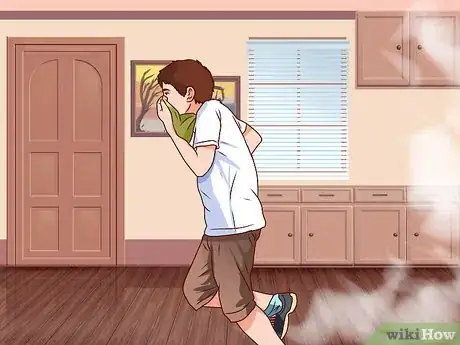
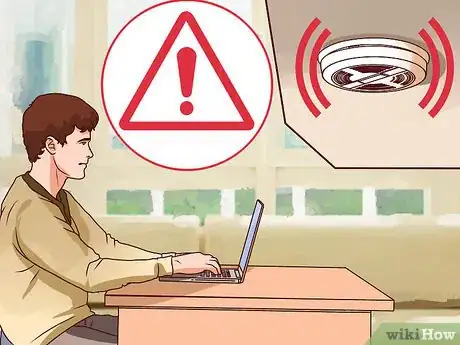

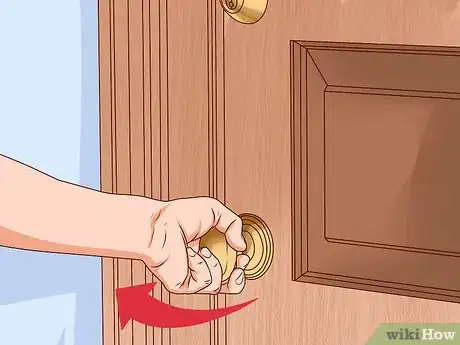
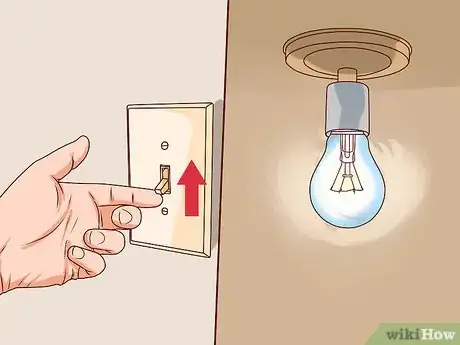


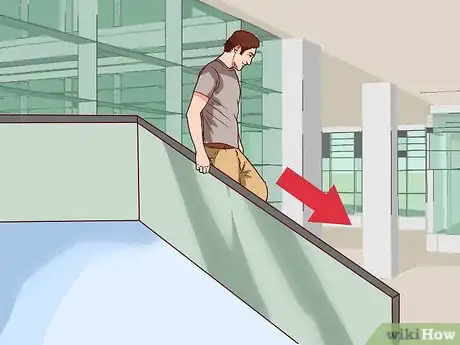

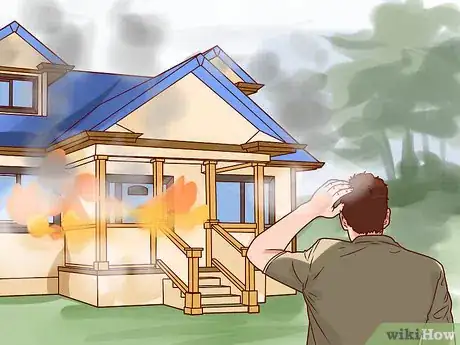
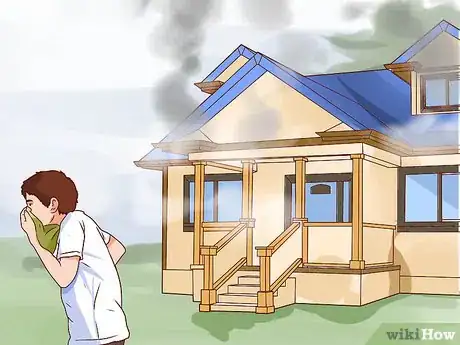
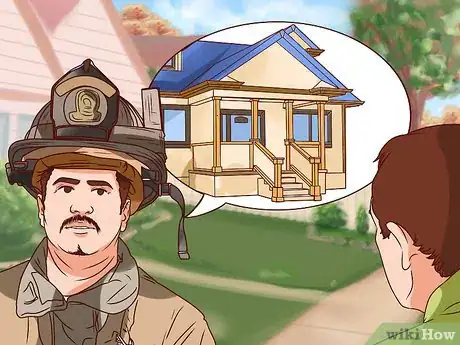
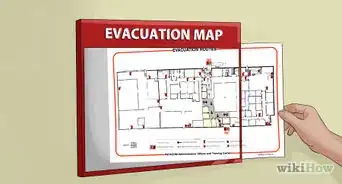



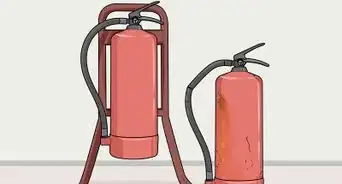





-Step-11-Version-2.webp)
